The Sonoita High Desert Wine Region offers a unique opportunity for sustainable tourism with its diverse microclimates and varied terrain, appealing to eco-conscious wine enthusiasts. By promoting climate-smart shuttle transit, such as electric shuttles running on renewable energy, the region can attract visitors while reducing carbon footprints. Implementing efficient routes, real-time tracking, and strategic pick-up/drop-off points enhances the wine tour experience, supporting local businesses and preserving the delicate desert ecosystem. This sustainable approach positions Sonoita as a game-changer for eco-friendly travel, with unique selling propositions like storytelling about local sustainable viticulture methods.
Explore Sonoita’s High Desert wine region in style with climate-smart shuttle transit, a game-changer for sustainable tourism. This article delves into the potential for eco-conscious wine experiences, detailing how a carefully designed shuttle network can enhance accessibility while minimizing environmental impact. From overcoming logistical challenges to promoting local businesses, discover how this innovative approach is revolutionizing wine tours in Sonoita, offering travelers an unforgettable journey through scenic landscapes.
- The Potential for Sustainable Wine Tourism in Sonoita's High Desert Region
- Overcoming Challenges: Creating a Climate-Smart Transit System
- Designing an Efficient Shuttle Network for Wine Tours
- Benefits for Local Businesses and the Environment
- Implementing and Promoting Eco-Friendly Wine Tour Experiences
The Potential for Sustainable Wine Tourism in Sonoita's High Desert Region
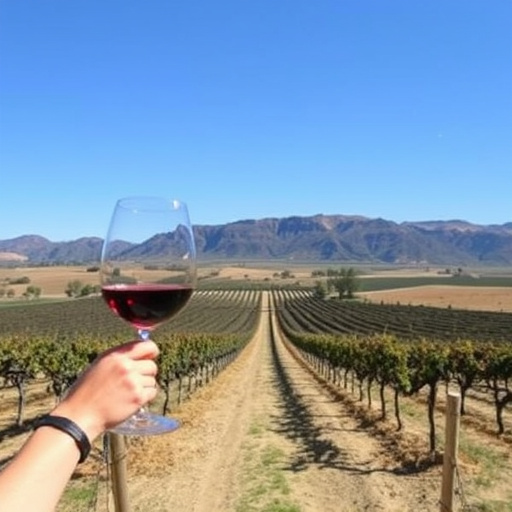
The high desert region of Sonoita, known for its rugged beauty and vibrant wine culture, presents a unique opportunity for sustainable tourism. With its diverse microclimates and varied terrain, this area offers a distinct experience for wine enthusiasts seeking off-the-beaten-path destinations. By promoting climate-smart shuttle transit, the region can attract visitors interested in eco-conscious travel while reducing carbon footprints. Wine tours in Sonoita can become a model for sustainable tourism, showcasing how natural wonders and agricultural practices can coexist harmoniously.
Imagine electric shuttles transporting guests through picturesque vineyards, offering them a chance to immerse themselves in the local viticulture. This approach not only reduces traffic congestion and pollution but also encourages visitors to engage with the region’s rich history and ecological diversity. By integrating climate-smart transportation into wine tours, Sonoita can position itself as a forward-thinking destination, appealing to conscious travelers who value both their environmental impact and unique travel experiences.
Overcoming Challenges: Creating a Climate-Smart Transit System
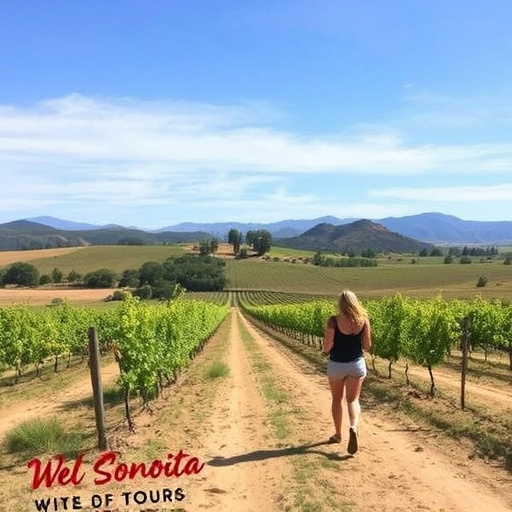
Navigating the unique challenges posed by the Sonoitas High Desert Wine Region’s climate is a key aspect of creating a sustainable and efficient transit system for wine tours. This region, known for its arid conditions and extreme temperatures, requires innovative solutions to ensure year-round accessibility. One major hurdle is managing energy consumption, as air conditioning becomes essential during hot summer months, impacting overall sustainability.
To overcome this, developers are turning to smart technologies. Implementing climate-responsive features in shuttles, such as advanced insulation, energy-efficient motors, and intelligent routing algorithms, can significantly reduce carbon footprints. Additionally, utilizing renewable energy sources for charging stations along the tour routes can further enhance the environmental benefits, making wine tours more eco-friendly and accessible experiences for visitors interested in exploring the region’s vineyards.
Designing an Efficient Shuttle Network for Wine Tours
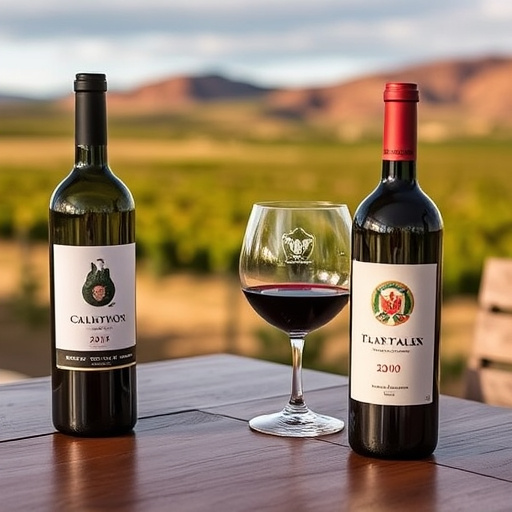
Designing an efficient shuttle network is paramount for enhancing the wine tour experience in the vast and scenic Sonoita High Desert Wine Region. The challenge lies in balancing timely schedules with the unique terrain, ensuring that visitors can access multiple vineyards seamlessly. A well-structured system could involve strategic pick-up and drop-off points at popular wineries, allowing for optimal route planning to minimize travel time.
By utilizing technology for real-time tracking and communication, tour operators can provide accurate updates to guests, ensuring they arrive at their desired destinations promptly. This innovative approach not only benefits tourists but also supports local businesses by encouraging longer wine tasting sessions and fostering memorable experiences within the region’s captivating landscape.
Benefits for Local Businesses and the Environment
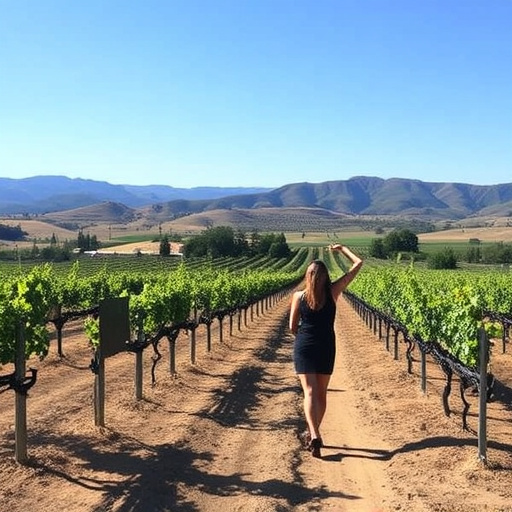
Implementing climate-smart shuttle transit across the Sonoitas High Desert Wine Region brings a multitude of benefits for local businesses and the environment. For wine tour operators, this sustainable approach can enhance their services, attracting eco-conscious travelers who prioritize responsible tourism. By reducing traffic congestion and carbon emissions, shuttles can offer a more efficient and enjoyable experience for visitors, while also promoting the region’s natural beauty and unique character.
Locally, these changes are positive for businesses along the routes, as they encourage repeat visits and word-of-mouth recommendations from satisfied tourists who appreciate environmentally friendly practices. Moreover, the reduced environmental impact contributes to preserving the delicate desert ecosystem, ensuring the long-term viability of the wine region’s ecological and economic sustainability.
Implementing and Promoting Eco-Friendly Wine Tour Experiences
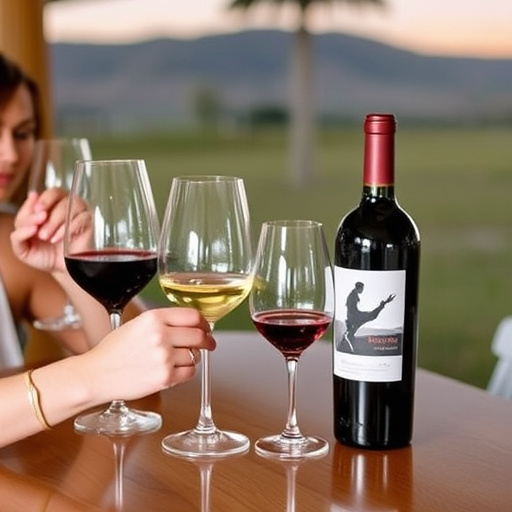
Implementing eco-friendly practices in wine tours across the Sonoita High Desert Wine Region is a game-changer, attracting environmentally conscious visitors and fostering a sustainable tourism ecosystem. By promoting climate-smart transit options, such as electric shuttles or carpooling, tour operators can significantly reduce carbon footprints associated with traditional wine tasting excursions. These initiatives not only contribute to preserving the region’s natural beauty but also enhance the overall visitor experience by offering serene, scenic journeys between vineyards.
Additionally, integrating green practices into the heart of wine tours allows for unique selling propositions and storytelling opportunities. Tour guides can educate guests on sustainable viticulture methods employed by local wineries, from organic farming to renewable energy adoption. Such insights create memorable interactions, encouraging visitors to support eco-conscious businesses and actively participate in preserving the delicate desert landscape that defines Sonoita’s wine country allure.
The integration of climate-smart shuttle transit in Sonoita’s High Desert wine region represents a significant step towards sustainable wine tourism. By overcoming challenges and designing efficient shuttle networks, this approach not only enhances the visitor experience but also benefits local businesses and the environment. Implementing eco-friendly practices in wine tours positions Sonoita as a leader in responsible travel, attracting environmentally conscious folk seeking unique, meaningful experiences amidst the region’s vibrant tapestry. This innovative model offers a promising roadmap for other wine destinations worldwide to follow, ensuring the preservation of these delicate landscapes while fostering economic growth through climate-conscious wine tourism.
